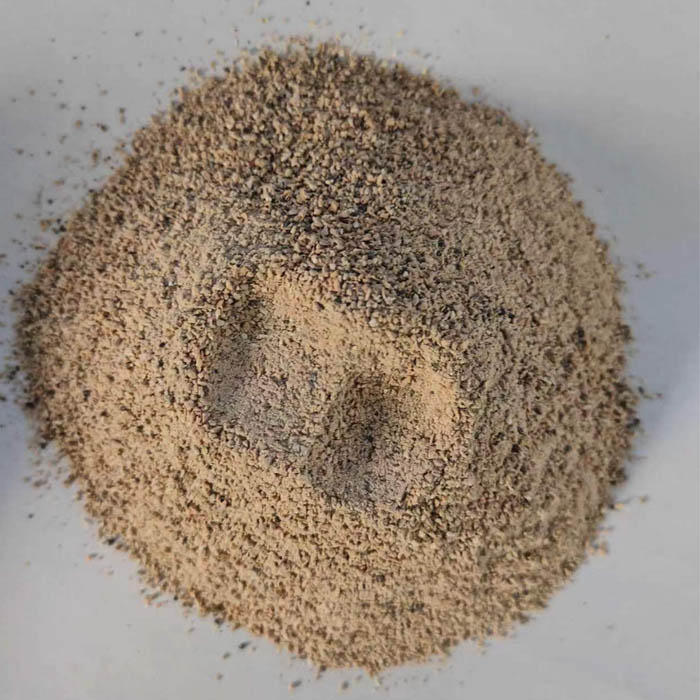Nov . 27, 2024 03:24 Back to list
Effects of Powdered Activated Carbon on Adsorption Efficiency in Environmental Applications
Powder Activated Carbon Adsorption An Effective Approach to Water Treatment
In recent years, the issue of water contamination has gained significant attention due to its adverse effects on human health and the environment. Various pollutants, including industrial waste, pesticides, and pharmaceuticals, pose serious risks, necessitating efficient water treatment methods. One powerful technique for purifying water is powder activated carbon (PAC) adsorption, which has emerged as a popular choice for removing organic and inorganic contaminants.
What is Powder Activated Carbon?
Powder activated carbon is a fine black powder made from carbon-rich materials such as wood, coal, or coconut shells. Through a series of activation processes, the carbon's surface area is significantly increased, enhancing its adsorption capacity. The resulting product is characterized by its high porosity and large surface area, making it highly effective for capturing a wide range of contaminants in water.
Mechanism of Adsorption
The effectiveness of PAC in water treatment lies in the principle of adsorption. When water is passed through PAC, various pollutants adhere to the surface of the carbon particles. Two primary mechanisms facilitate this process van der Waals forces and chemical bonding. The porous structure of PAC allows for the capture of larger molecules, while its surface chemistry can interact with smaller, charged particles. This multifunctional capability enables PAC to target diverse contaminants, including volatile organic compounds (VOCs), heavy metals, and color-causing agents.
Applications in Water Treatment
Powder activated carbon is extensively used in both municipal and industrial water treatment facilities. In municipal settings, PAC is employed to enhance the quality of drinking water by removing contaminants that may affect taste, odor, and safety. Its application is particularly beneficial in treating surface water that may contain organic materials from agricultural runoff or vegetation decay.
powder activated carbon adsorption

In industrial applications, PAC plays a crucial role in treating wastewater. Industries such as pharmaceuticals, food and beverage, and textiles generate effluents laden with harmful substances. PAC adsorption effectively reduces the concentration of these pollutants, helping industries comply with environmental regulations and minimize discharge impacts on aquatic ecosystems.
Advantages of Using PAC
One of the primary advantages of using powder activated carbon is its efficiency. Due to its high surface area and adsorption capacity, PAC can effectively remove contaminants at relatively low concentrations, making it a cost-effective solution for water treatment. Additionally, the use of PAC can often lead to the generation of fewer by-products compared to other chemical treatment methods, contributing to a more sustainable approach to water purification.
Moreover, the versatility of PAC allows for its use in various applications, including drinking water purification, wastewater treatment, and even air treatment processes. It can be applied in batch processes or continuously fed systems, adapting to the specific needs of different treatment scenarios.
Challenges and Considerations
Despite its many advantages, the use of PAC is not without challenges. One concern is the potential for saturation, where the carbon loses its adsorption capacity after a certain threshold. Therefore, regular monitoring and replacement of PAC may be required to maintain treatment efficacy. Additionally, the disposal of spent PAC, which may still contain adsorbed pollutants, must be managed appropriately to prevent secondary contamination.
Conclusion
Powder activated carbon adsorption is an integral technology in the landscape of water treatment, offering an effective means of removing a variety of contaminants. As water quality continues to be a pressing global concern, the importance of methods like PAC adsorption cannot be underestimated. By harnessing the power of PAC, we can ensure cleaner, safer water for countless communities, enhance environmental sustainability, and contribute to public health initiatives. Continued research and development in this area will undoubtedly lead to more innovative applications and improvements in treatment efficiency, solidifying PAC's role as a cornerstone in modern water treatment strategies.
-
Fe-C Composite Pellets for BOF: Enhance Steelmaking Efficiency
NewsAug.07,2025
-
Eco-Friendly Granule Covering Agent | Dust & Caking Control
NewsAug.06,2025
-
Fe-C Composite Pellets for BOF: High-Efficiency & Cost-Saving
NewsAug.05,2025
-
Premium Tundish Covering Agents Exporters | High Purity
NewsAug.04,2025
-
Fe-C Composite Pellets for BOF | Efficient & Economical
NewsAug.03,2025
-
Top Tundish Covering Agent Exporters | Premium Quality Solutions
NewsAug.02,2025
